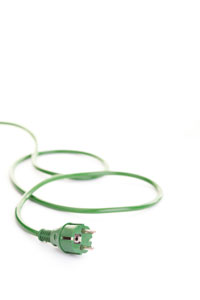Energy Conservation to Reduce Consumption and Your Bill
Download Audio VersionEnergy conservation refers to different methods and strategies that aim to reduce the amount of energy used. Conservation is essential for environmental protection and human health. Plants that produce electricity release toxic gases, mercury, arsenic, and other harmful and toxic chemicals. They power industrial plants, businesses, and commercial and residential units that use huge amounts of electricity, especially in the developed countries.
How Businesses Conserve Electric Power

Companies implement different strategies to reduce energy consumption. One way is to allow sunlight in during the winter and fall and use photovoltaics to turn light into heat. Shading is another strategy that businesses use during the summer. It helps reduce the amount of electricity used by air conditioners. Some companies also install ceiling fans for better air circulation. When it comes to office equipment, it is important to turn off computers, laptops, printers, and other devices at night and when they are not in use. Some businesses use power strips so that two or more devices can be switched off at once. Using screensavers is not a smart way to reduce consumption. It is better to use hibernation or sleep modes during the lunch break. Alternatively, you can turn off equipment, including battery-operated laptops and devices and monitors. Using equipment with rechargeable batteries is yet another way to conserve energy. Finally, an increasing number of businesses buy electric and fuel-efficient vehicles.
Households and Conservation
While residential energy consumption has declined over the past 30 years, there are ways in which households can save even more. Close to 40 percent of the electricity used by households is for heating. One way to reduce consumption is to buy a central air conditioning system. Homeowners may replace inefficient and old appliances with new, Energy Star devices. New generation fridges, ranges, dryers, and other appliances consume less energy. As a rule, homes that are equipped with efficient devices use 40 percent less than households that aren’t.
There are different ways to reduce consumption at home, and one is to use thermostats. You can increase and decrease temperature levels depending on whether your home is occupied or unoccupied. This can be done automatically if you buy a programmable thermostat. Try to use ventilation fans in the living room, bathroom, kitchen, and other areas less often. Seal and caulk leaks in places where wires, ducting, and plumbing pass through the ceiling, floors, and walls. Weather stripping and caulking windows and doors also helps. Finally, it is best to use microwaves, toaster ovens, and solar ovens, especially when you prepare small meals. Air drying the dishes and using small appliances also reduces the amount of energy used.
Using dimmers, shades, and alternative light sources saves energy and money. Dimmers, for example, allow homeowners to adjust and control light levels, reduce consumption, and set a mood. The use of LED lamps, CFLs, and halogen lights also saves energy, especially when dimmed. Dimmers and other innovative technologies extend bulb life as well. For your outdoor lighting, you may want to use motion-detector lights. They are efficient, easy to install, and convenient to use. Solar lights are another option for your backyard. There are different types and models, including landscape, path, and accent lights.
Benefits Associated with Conservation
Many studies have shown that energy conservation offers multiple benefits. Green lifestyle goes hand in hand with conservation and improved efficiency. Energy production requires non-renewable resources that are extracted, processed, and transported to the power plants. Underground water supplies are contaminated as a result of oil and coal extraction. The facilities, machinery and equipment, and roadways that are built to extract and transport resources disrupt major ecosystems and cause environmental pollution. Oil spills also damage wildlife and pose environmental hazards. There are many endangered animal species as a result of oil spills. The list includes brown pelicans, migrating songbirds, migrating and nesting shore birds, dolphins and whales, and others. Fragile ecosystems and plant and animal species are at risk because of our dependence and reliance on fossil fuels. Transportation of fuels increases the risk for spills and is an environmental hazard.
Related Articles
Smart Technologies and Software to Monitor Use and Adopt Power Saving Measures
Environmentally conscious users can choose from a wide array of energy saving applications and software. These applications help reduce power consumption by 20 to 30 percent and reduce your carbon footprint. About 5 percent of the carbon dioxide emissions worldwide are attributed to computers and...
Car-Free Communities and Green Designs for Energy and Water Conservation
There are many benefits to living in a green community, and one is that residents enjoy clean air and improved quality of life. Eco-friendly buildings help homeowners to save on water and electricity for cooking, heating, and general use. Features of Green BuildingsGreen buildings incorporate...
Energy-Saving Light Bulbs as a Flexible and Efficient Solution
Energy-efficient light bulbs are one solution that helps homeowners to conserve energy and reduce their bill. Types of Energy-saving Light BulbsThe main types of energy efficient lighting options are incandescent bulbs, CFLs, and LEDs. The energy efficiency of the three types is different. You can...
Energy Use Assessment for Improved Efficiency
Energy use assessment is done to find out which parts of the home and which household appliances are efficient and whether they use more than necessary. The goal is to achieve optimal use, conserve energy, and minimize damage to the environment.Step-by-step AssessmentGood thermal insulation is an...


